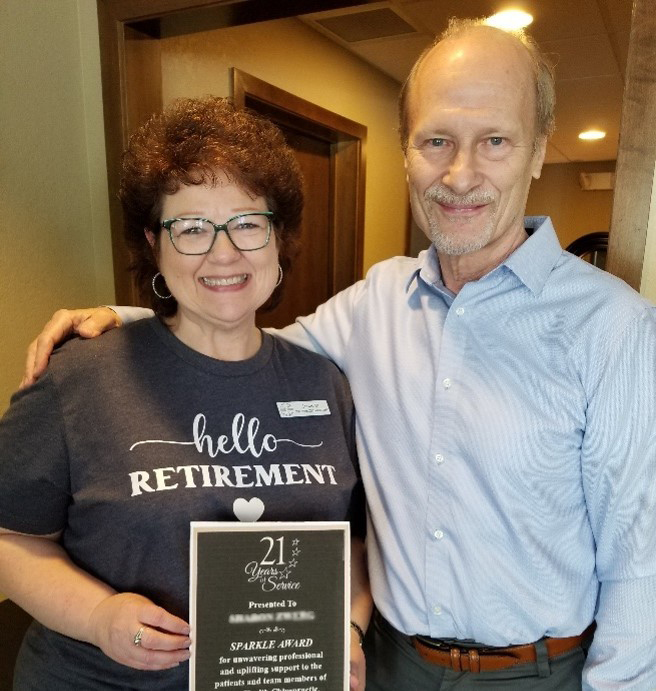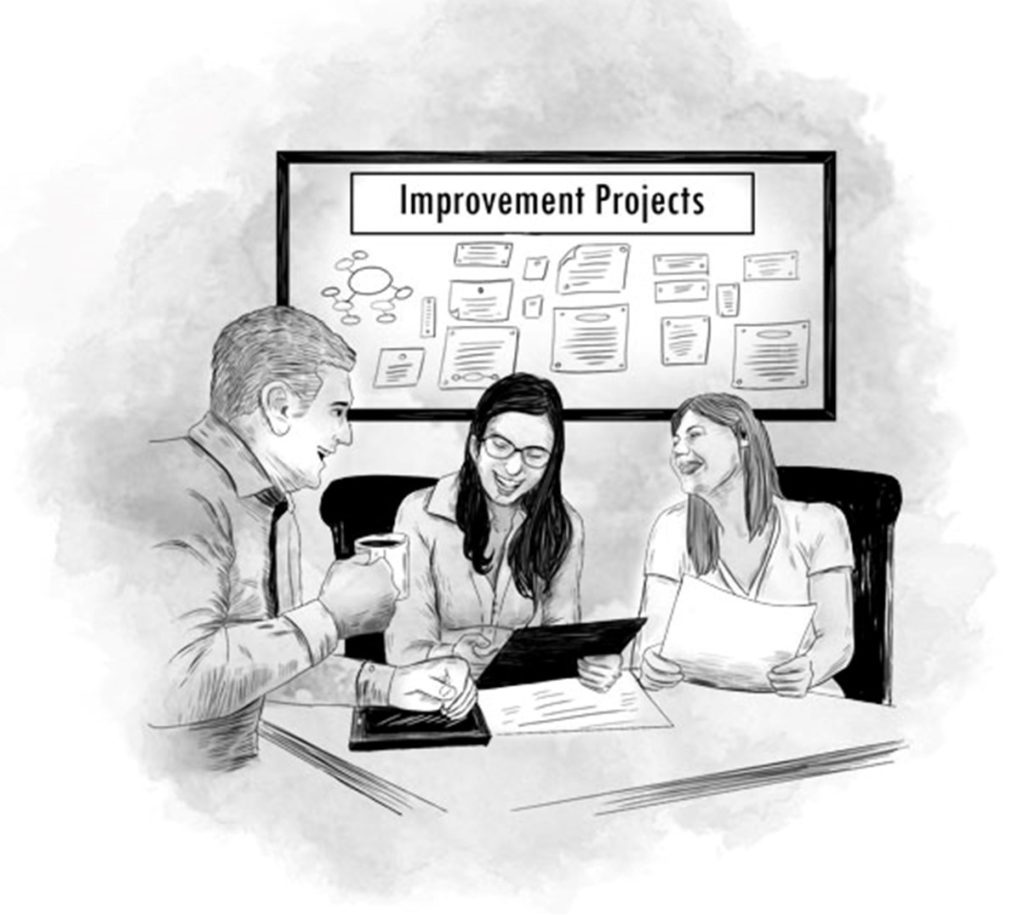Most of your staff are not engaged in the success of your office. Most of them JUST DON’T CARE.
At least that is according to a 2015 Gallup report that interviewed over 80,000 working adults.
The report showed that there are twice as many “actively disengaged” workers in the workplace as there are “engaged” workers who like their jobs. The percentage of U.S. workers in 2015 considered engaged in their jobs averaged 32%. The majority (51%) of employees were “not engaged,” while another 17% were “actively disengaged.” (“Actively disengaged” means that they are actively sabotaging their work.)
But let’s say your office is different, which I am sure it is. You are motivated enough to read this article and I am sure that is reflected by your team as well. But all the same, take a look with me at the level of motivation of your office.
How was your last team meeting? Were you there? Was everyone sitting on the edge of their seat and contributing new ideas and plans on how to reach new goals in the office? Or, were most everyone pretty silent?
Sure, your employees smile and look busy when you are around, and often work hard and they do care. But really, how much?
What would your office be like if the motivation, creativity, and level of pro-activity was always very high at “10,” or even ranged from 7-10? If they felt that it was “their” business, where they took responsibility for the quality and quantity of outcomes, and regularly worked to improve the business – and themselves?
I have been reviewing the subject of motivation for some time, from my own experience over the years and from what social scientists have reported.
I have incorporated certain principles into a new system of business management that are specifically designed to unleash everyone’s innate motivation – including business owners like you!
Motivation is the foundational in a chiropractic office, or dental office, acupuncture – even with therapists and other service firms. It is a bedrock for any healthy practice and business.
Here is one very useful principle specifically about motivation and how you can use it to generate more engagement – and productivity — with your team.
3 Goals System of Business Management: Principle #5
Self-Determination and Motivation
Everyone wants their own sandbox to play in.
You do. This is one of the reasons you went to school – and why you started your business.
We all want to have something that we can call our own where we can create and demonstrate our competence. What we get in return is feedback that we can do something good, that we have power, that we can make something beneficial happen, that we can … make a positive difference. If only to ourselves, we can say: “Look what I did. I did this. This is my creation.”
You can see it in children, for example, when they bring you their colored scribbles on crumpled pieces of paper to proudly show you their great work of art. This is their sandbox.
Of course, we all work for money. But we also have deeper motivations that if tapped into and nurtured, can be very powerful. By harnessing these motivations, and then linking them with others who have a shared goal, we can create a dynamic team driven business that is very profitable.
This has been explored by social scientists who have studied what has come to be called Self-Determinism Theory. I have also seen it in action. Essentially, it states that we all have innate drives and inherent needs that motivate us to be more self-determined rather than determined, or controlled by, outside forces.
External motivation, like the fear of being fired, can only motivate us so far. Threats, criticisms, negative reinforcement may produce short term action, but in the end, they demotivate, or worse.
The level of employee motivation has a tremendous influence over the success of your business.
An unmotivated staff, one that only becomes engaged to the level of “I will perform just good enough so that I don’t get fired or criticized,” will weigh the office down.
Self-Determinism Theory (STD) has three components, all of which easily apply to your business. These are:
- Autonomy
- Competence
- Relatedness.
And by the way, while reading this, consider how this also applies to you as well!
Autonomy
You do not want your treatment plans second-guessed by a clerk in an insurance company. Neither does your front desk want you breathing down their necks about where all the patients or practice members are, or why they used the blue pen. You should train and educate your team, but then get out of their way and let them succeed or fail.
Think of helping a child ride a bicycle. Sure, they will need your help for a while. A push now and then. Perhaps some training wheels. But you will have to let them fall down a few times and allow them to get the courage to get back on the bike and succeed. You can continue coaching them to improve, but you must let them go.
Even if you see employees appearing idle, or having brief personal discussion with another employee, back off. Tolerate minor errors. Give your team some rein. Come back around later to coach them and train them to improve. Mostly educate them on the mission of the office and of their roles, and get them to understand what outcomes they are supposed to be producing. Once they see that the statistics measure their performance, they will be more self-directed and want to do all they can to win the game!
We all want to be free to create our own enterprises, even if we work for someone else. As long as what we do is in line with the purpose or mission of the business and our role, there should be no problem. This helps us demonstrate our competence, which is the next element of Self-Determined Theory.
Competence
Doing a good job, all by itself, is its own reward. It pushes away self-doubts and shows us, and others, how good we really are. It is positive reinforcement.
And the better we can do a good job, the better the results will be, which demonstrates to us just how awesome we truly are! Plus, as we increase our skills, we also will find that our duties are easier to perform.
Your team wants to improve their skills. Help them do so.
Sign them up for seminars, webinars, give them monthly reading assignments, and give them a coach or three of them. But this has to be done in conjunction with your supervision. You will need to guide them through the training so that they see how it applies to their roles and the business as a whole. Quiz them on what they are learning and have them give presentations to the team on what they are learning. The old maxim applies: “to teach is to learn twice.”
And where possible, make sure they earn certificates and can wear pins or insignia that testify to their competence. This goes along with Game Theory – people win at one level and then want to go to the next level. They want their “badges.”
Business owners throw staff into their jobs and expect them to produce with little or no training. Without exception, the offices I have seen that provide more training and coaching for their team — do better. Companies spend an enormous amount on employee training. $161 Billion in the U.S. last year (trainingindustry.com). And, it pays off.
One study showed a comparison between car companies and how many hours they trained their new employees: Japan spends an average of 364, Europe averages 178, and the United States – 21 (Pfeffer –The Human Connection).
And you can guess which country has cars with the best frequency of repair record.
Children want to be super heroes and wear their capes.
Don’t we all!
Relatedness.
This is the feeling of being connected – and there are two aspects to this.
Family. First, “relatedness” is the feeling of not being left out of the “loop” and of being included. Staff meetings help with this as does the general work environment. This is the sense that we are in this venture, job, and profession together. That we are part of a family.

Keep your team involved with your decision making. Give them some of the issues you are dealing with and encourage their input. They are stakeholders – it is their office too!
Greater Purpose. The other aspect of relatedness is that people generally want to be associated with a greater purpose. The more that each member can connect to the greater purpose of the group and make it their own, the more motivated they will be. Taking it a step further, if employees have higher goals of their own that coincide with the organization’s and they are allowed to pursue them within the organization, there would be no reason for employees to work anywhere else.
Train your team, let them own and creatively improve their own areas – and help to do the same for the entire office. Nurture camaraderie and a spirit of family – and always remind them – and yourself — why we are doing what we are doing.
Do this, and not only will your business be more successful, but you too will be more motivated and have more fun in the bargain.
# # #
Self-Determination Theory: Basic Psychological Needs in Motivation, Development, and Wellness. Ryan, R. M. & Deci, E. L. (2017) and Why We Do What We Do: Understanding Self-Motivation Paperback – August 1, 1996
© Edward W. Petty, From the upcoming book: “Three Goals: A New Practice and Business Building Methodology That Is Simpler, Faster, And More Effective and Fun than What You Are Doing Now.” By Edward Petty, due to be published sometime before the Singularity. © May, 2017
 While she indeed does “sparkle,” so does the entire practice. And the sparkle of this office is a byproduct of its synergy.
While she indeed does “sparkle,” so does the entire practice. And the sparkle of this office is a byproduct of its synergy.


